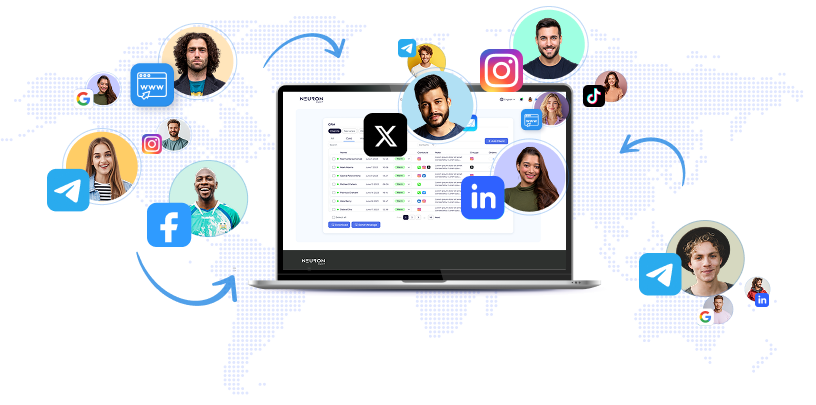
Earlier this week, Channel Nine faced backlash for publishing an altered image of Victorian MP Georgie Purcell. The image depicted her in a midriff-exposing tank top, although she had actually been wearing a dress. Purcell accused the channel of sexism and manipulation of the image. Channel Nine later apologized for the edit, attributing it to the use of an artificial intelligence (AI) tool in Adobe Photoshop. Generative AI has gained popularity in the past six months, with image editing and design tools like Photoshop and Canva incorporating AI features into their programs. These AI tools offer various capabilities, prompting the question of whether they can be held responsible for doctored images. As these tools become more widespread, it is crucial to understand their potential dangers as well as opportunities. Typically, AI-generated or AI-augmented images are created through text commands that describe the desired edits or content. However, Photoshop introduced a new feature called generative fill, which includes an "expand" tool. This tool allows users to add content to images without text prompts. For example, users can extend the canvas to expand an image beyond its original borders, and Photoshop will "imagine" additional content that could go beyond the frame. This feature is powered by Adobe's own generative AI tool called Firefly. In the case of the altered image, Channel Nine resized it to fit their television composition, inadvertently generating new parts of the image that were not present originally. The original source material and whether it was cropped are crucial factors to consider here. When the frame of the photo stops around Purcell's hips, Photoshop extends the dress as expected. However, if the photo is more tightly cropped or composed, Photoshop has to "imagine" more details, resulting in varying outcomes. Determining the legality of altering someone's image in this manner ultimately falls within the jurisdiction of courts.
It depends on various factors, including the risk of reputational harm. If a party can argue that the publication of an altered image has caused or could cause "serious harm, " they may have a defamation case. Generative AI is just one way that news organizations utilize AI. Some use AI to create or publish images, including photorealistic depictions of current events. Others rely on AI for stock photography or to illustrate challenging topics, such as AI itself. Many adhere to codes of conduct established by institutions or industry-wide organizations, like the Journalist Code of Ethics from the Media, Entertainment & Arts Alliance of Australia. These codes emphasize presenting accurate and truthful visuals while disclosing any manipulations that could mislead audiences. Some newsrooms prohibit their staff from using AI to generate content, while others allow it only for non-realistic illustrations. Transparency with audiences about the content creation process and editing is a key concern for news outlets. In 2019, Adobe initiated the Content Authenticity Initiative, joined by major media organizations, image libraries, and multimedia companies. This initiative led to the introduction of content credentials, providing a digital history of image creation equipment and edits. Content credentials aim to enhance transparency specifically regarding AI-generated or augmented content, although their usage remains limited. Additionally, news editors acknowledge the potential for bias in AI generations due to the use of unrepresentative training data. The World Economic Forum has recognized AI-fueled misinformation and disinformation as the greatest short-term risk, surpassing extreme weather events, inflation, and armed conflict. Given this risk and the upcoming elections across the globe, it is essential to approach online content with healthy skepticism, be discerning about news sources, and actively engage in critical thinking. These practices enable individuals to participate effectively in democracy and decrease the likelihood of falling victim to scams. By remaining informed and thoughtful, individuals can navigate the digital landscape and contribute to a well-informed society.
None


Искусственный интеллект Watson Health от IBM достиг важной вехи в медицинской диагностике, получив показатель точности в 95 процентов при обнаружении различных видов рака, включая рак легких, груди, простаты и колоректальный рак.

Раннее на этой неделе мы спрашивали старших маркетологов о влиянии искусственного интеллекта на профессии в маркетинге, получив широкий спектр продуманных ответов.

Vista Social добилась значительного прорыва в управлении социальными сетями, интегрировав технологию ChatGPT в свою платформу, став первым инструментом, внедрившим передовой разговорный искусственный интеллект OpenAI.

CommanderAI привлекло 5 миллионов долларов на начальном этапе финансирования для расширения своей платформы аналитики продаж на базе ИИ, специально ориентированной на индустрию отходоперевозок.

Melobytes.com запустила инновационную услугу, которая преобразует создание новостных видео с помощью технологий искусственного интеллекта.

Бенжамен Уи прекратил деятельность Lorelight — платформы для оптимизации движка поиска (GEO), предназначенной для мониторинга видимости бренда в ChatGPT, Claude и Perplexity, после того, как он пришёл к выводу, что большинству брендов не нужен специализированный инструмент для контроля видимости в AI-поиске.

Краткое изложение ключевых моментов Аналитики Morgan Stanley прогнозируют, что продажи искусственного интеллекта (ИИ) в секторах облачных технологий и программного обеспечения вырастут более чем на 600% за следующие три года и превысят 1 триллион долларов в год к 2028 году
Launch your AI-powered team to automate Marketing, Sales & Growth

and get clients on autopilot — from social media and search engines. No ads needed
Begin getting your first leads today